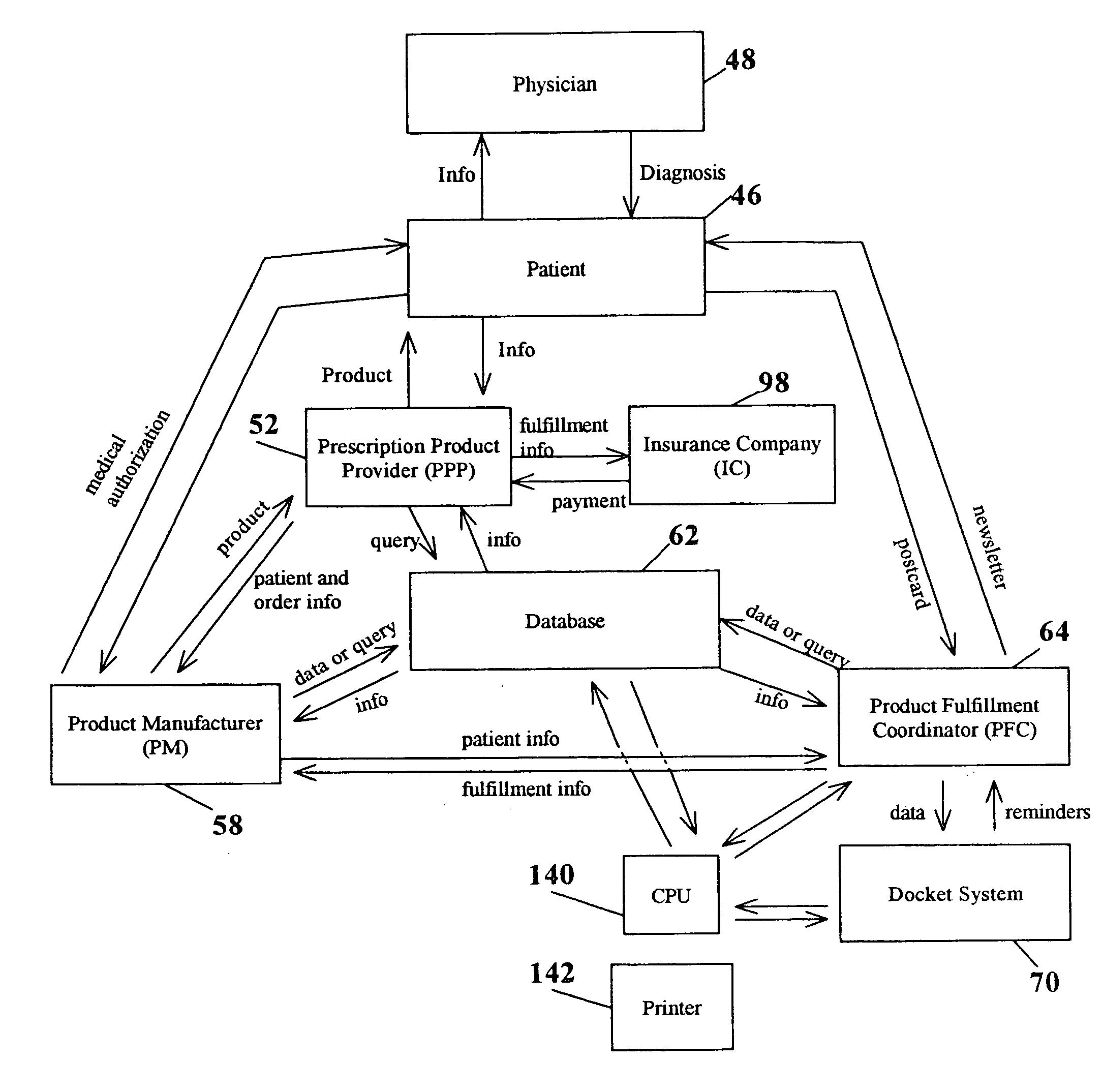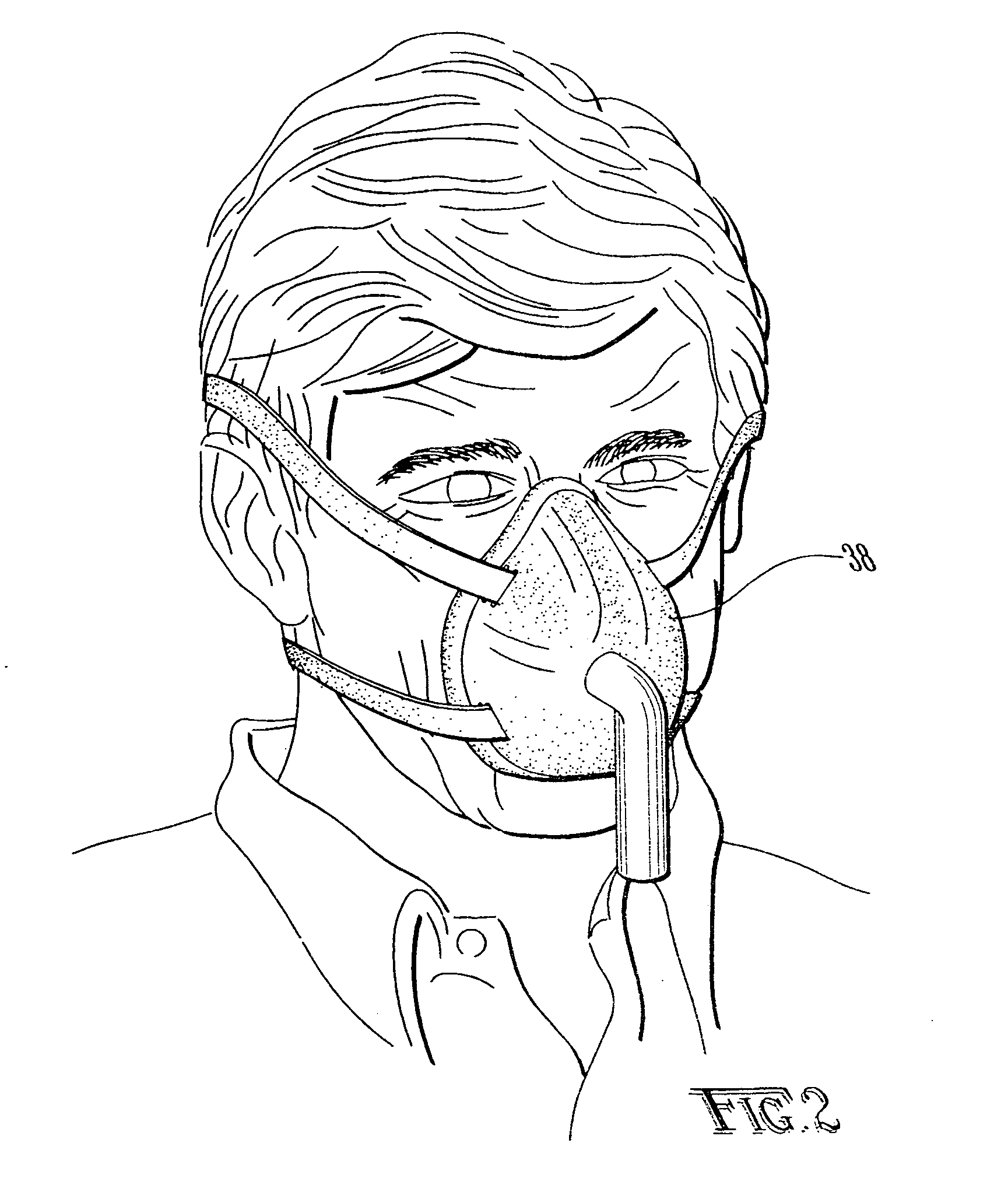Method for refilling a prescription product
a technology for refilling and products, applied in the field of method for refilling prescription products, can solve the problems of burdensome task, burdensome task, confusion surrounding the patient, etc., and achieve the effect of simple and convenient operation
- Summary
- Abstract
- Description
- Claims
- Application Information
AI Technical Summary
Benefits of technology
Problems solved by technology
Method used
Image
Examples
Embodiment Construction
[0025] Although the prescription product of the present invention may be a delivery system, such as insulin, syringes or a consumable product, such as pills or topical treatments, in the preferred embodiment, the prescription product is a continuous positive airway pressure (CPAP) kit, shown generally as (10) in FIG. 1. The kit (10) preferably contains instructions (12) a filter (14) a blower (16) and a hose (18) such as those well known in the art. The kit (10) also contains a first CPAP interface (20) and a second CPAP interface (22).
[0026] As shown in FIG. 1, the first CPAP interface (20) is of the “nasal mask” type being provided with a mask (24) and headgear (26). The nasal mask (24) is preferably of a “universal” fit type having a malleable triangular cushioned perimeter (28) which a patient can adjust to make larger or smaller or to more readily fit the patient's physiology. The second CPAP interface (22) is preferably a nasal canula (30), such as those known in the art. As ...
PUM
 Login to View More
Login to View More Abstract
Description
Claims
Application Information
 Login to View More
Login to View More - R&D
- Intellectual Property
- Life Sciences
- Materials
- Tech Scout
- Unparalleled Data Quality
- Higher Quality Content
- 60% Fewer Hallucinations
Browse by: Latest US Patents, China's latest patents, Technical Efficacy Thesaurus, Application Domain, Technology Topic, Popular Technical Reports.
© 2025 PatSnap. All rights reserved.Legal|Privacy policy|Modern Slavery Act Transparency Statement|Sitemap|About US| Contact US: help@patsnap.com



